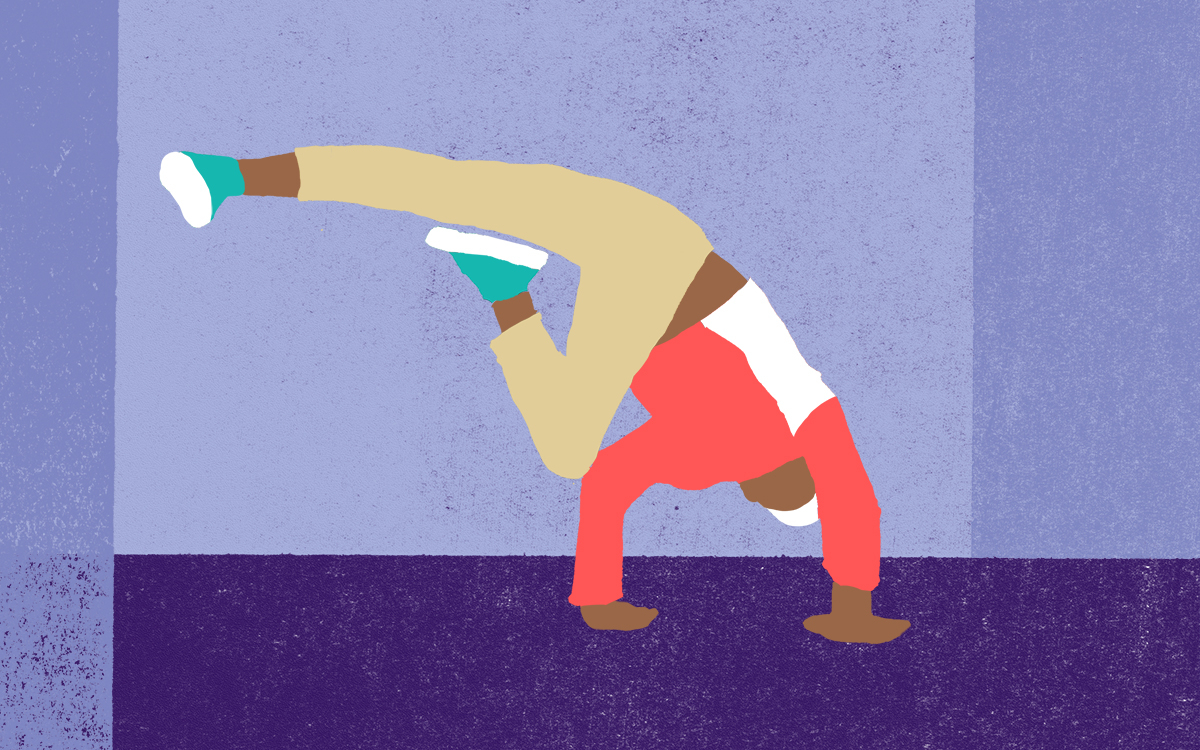Content
Cette page est aussi disponible en français
Dance, beats and the Halles de Paris: welcome to the world of breakdancing! In our "24 Sports Chrono" series, we tell you everything you need to know about Olympic and Paralympic Games disciplines. On your marks, get set!
Whether you're already familiar with breakdancing or not, you may have already encountered it on the streets of Paris. This highly artistic discipline, also called breaking, is making its debut at the Paris 2024 Games. We better make the most of it, sometimes new disciplines don't get a second chance. We'd like to take this opportunity to tell you all about it!
Real "art-hletes"
French breaker Dany Dann calls B-Boys and B-Girls "art-hletes". In his opinion, as much as they are athletes, they are also artists.
Take a look for yourself:
Vidéo Youtube
Breakdancers like to be known as breakers or B-Boys and B-Girls. The letter "b" stands for "break", since athletes perform their acrobatic moves during instrumental pauses in a song.
The B-Boy or B-Girl has to perform a series of tricks on the floor, pivoting on his or her hands, back and even head and of course it's all sound tracked to music. In fact, without a DJ, there's no breaking. They allow the dancer to express his or her "musicality" to the full, i.e. their ability to connect with the tempo and rythme. The most popular genres to dance to are breakbeat, funk, rap and soul.
Dancers are not allowed to know which song they will perform to. They must adapt and improvise.
Required skills: mastery of acrobatics and perfect physical condition
From the Bronx to Les Halles de Paris
Breaking emerged in the 1970s in the United States in one of New York's five boroughs, the Bronx. The story goes that it allowed gangs to confront each other peacefully. It's also a way of expressing oneself by combining sport, culture and music. It arrived in Europe and flourished in the 1980s and 1990s.
French breaking wouldn't have been the same without the Forum des Halles' concrete plaza in the former "belly of Paris". The beating heart of the city was the perfect place for breaking.
Niko Noki, a true living legend of the discipline, was one of the first to make his mark. He tells the story of "la place" which became an iconic hip-hop meeting ground. Today, a cultural center in Les Halles called La Place has preserved its spirit.
Liking the 24 Sports Chrono series?
The "24 Sports Chrono" is a weekly feature published during the lead up to the Games. Missed the previous episode? Catch up here with trampoline.
Who's representing France?
French contenders need to qualify to take part in the Paris 2024 Games: qualifying tournaments take place from March to June 2024. Two other decisive qualifying competitions have already taken place: the European Games (in Poland in June 2023) and the World Championship (in Belgium in September 2023).
At the age of 35, Guyanese Danis Civil, aka B-Boy Dany Dann, got his ticket to the Olympics by winning the gold medal at the 2023 European Games. You can listen to him explain his sport here.
The other "Tricolores" will have to wait until June 2024.
The City of Paris supports 50 hopeful Olympic athletes. For breaking, it supports :
-
B-Boy Mounir Amhiln, four times French champion, one time European champion and vice world champion twice. Read his interview here!
-
B-Girl Camille Regneault (aka Kami), who is also a choreographer and contemporary dancer. We caught up with her here.
When and where?
There will be two breaking events at the Paris 2024 Games: the women's and men's individual competitions. In each, 16 B-Boys and 16 B-Girls will compete in head-to-head duels to advance to the next round, all the way to the final.
Dates: August 9th at 8 p.m. for the B-Girls and August 10th at 8 p.m. for the B-Boys.
The venue: Place de la Concorde, an emblematic venue for urban sports, as it will also host BMX freestyle, skateboard and 3x3 basketball competitions.
Dates: August 9th at 8 p.m. for the B-Girls and August 10th at 8 p.m. for the B-Boys.
The venue: Place de la Concorde, an emblematic venue for urban sports, as it will also host BMX freestyle, skateboard and 3x3 basketball competitions.
Do you speak breaking ?
Breaking offers a wide repertoire of moves, categorized into four dance elements : "toprock", "downrock", "freezes" and "power moves". Many breakers add tricks and flips to their performances.
Lets take a look at freezes: this is when the dancer completes a move by remaining as still as possible, as if stuck in space, with only a hand, forearm or shoulder on the floor.
A power move is a series of rotational movements based on different parts of the body, the aim being to maintain rotation, usually ending with a freeze. Breakers aim to perform as many figures as possible in coordination with the music. Mastering a single one of these moves can take years of practice.
Why take up breakdancing?
If you want to build up your muscles in an artistic way, this is the sport for you!
Breaking mixes gymnastics - which requires flexibility and contortion skills - with dance. You'll be asserting your personality and skill to the sound of music.
Be careful though, it's extremely physically taxing on the whole body. You'll be using all your limbs, and the strength of your wrists, forearms, back, abdominal muscles and even your head.
We want to hear from you!
Was this information useful to you?
Please note: we cannot reply via this form (please do not include any personal information).

